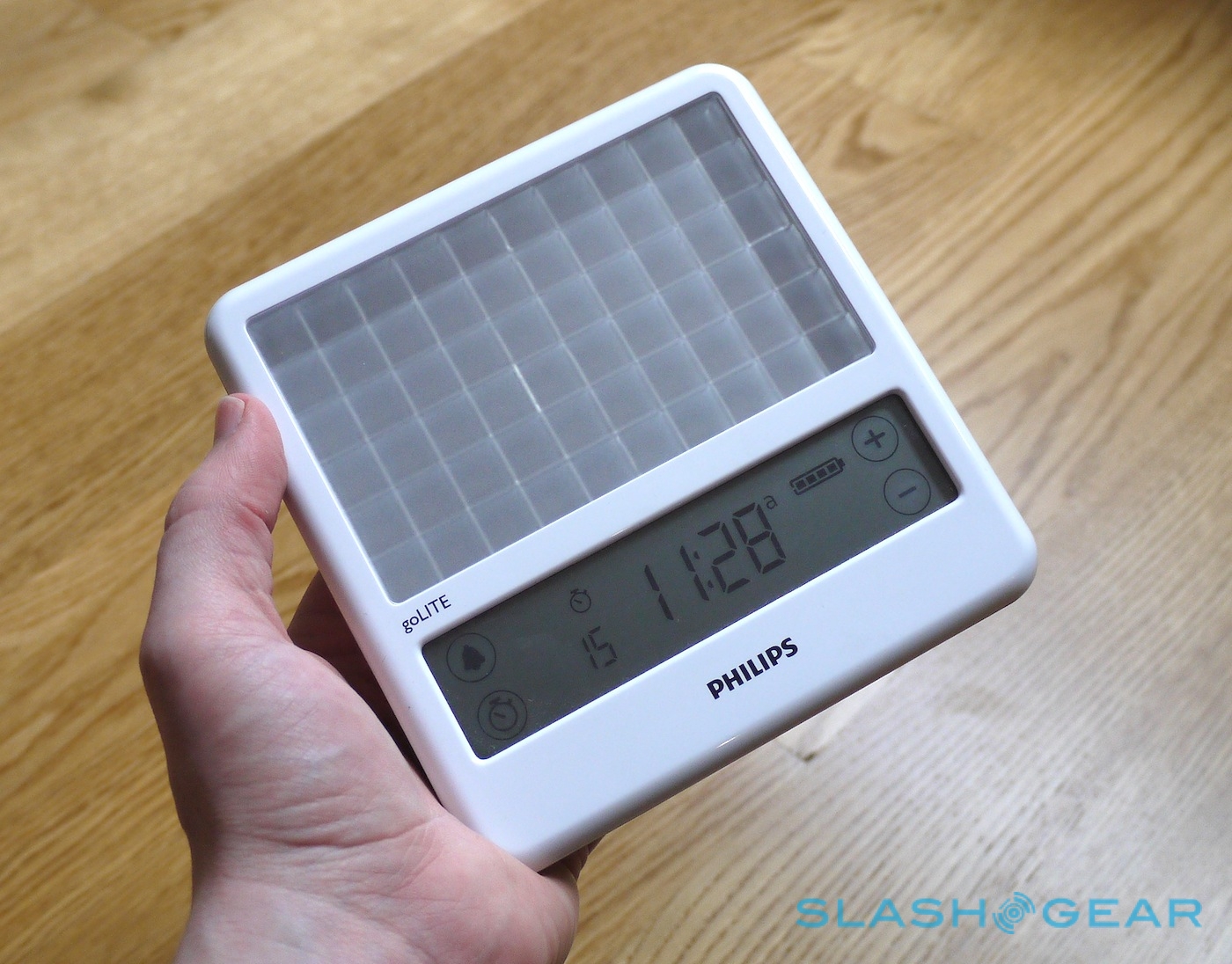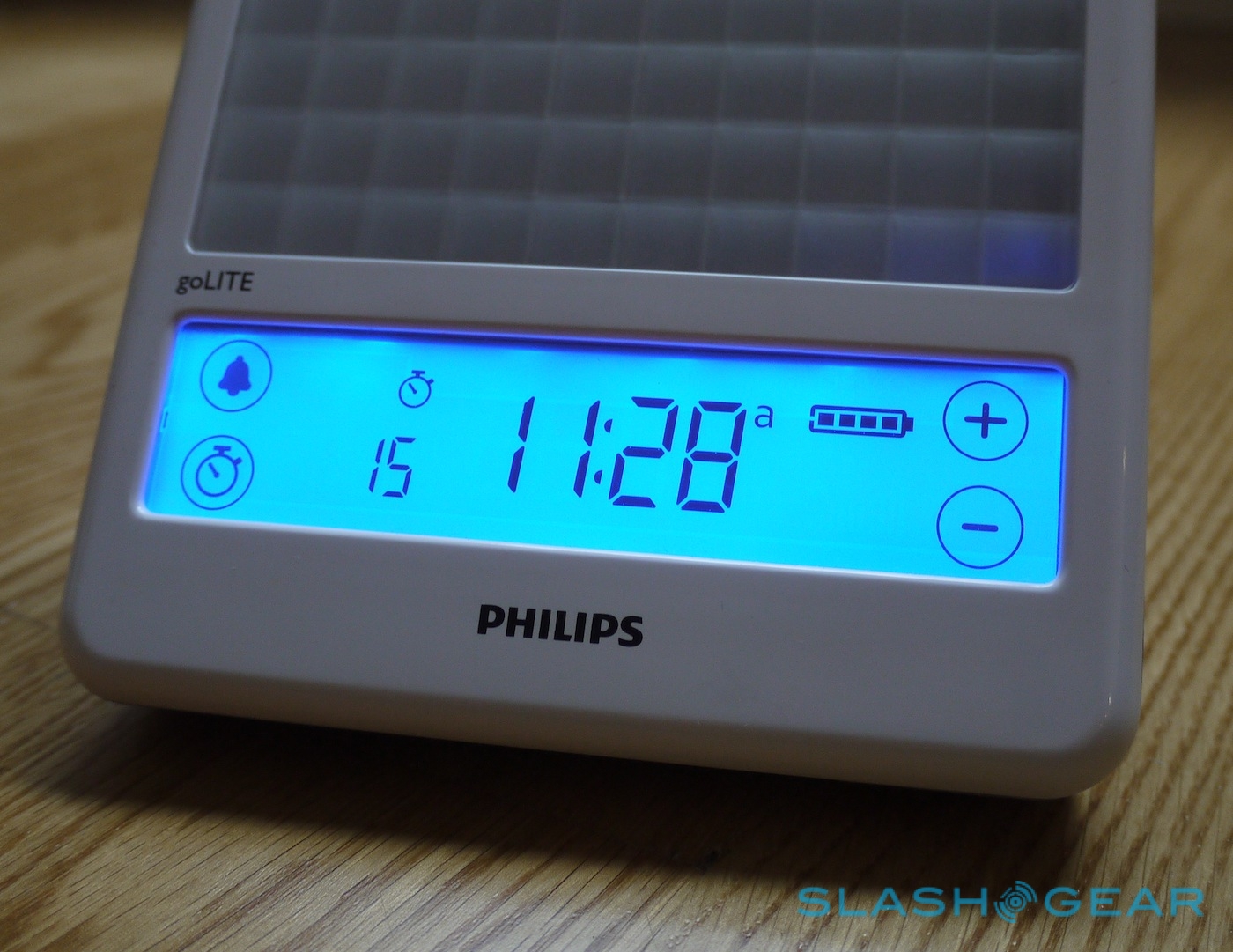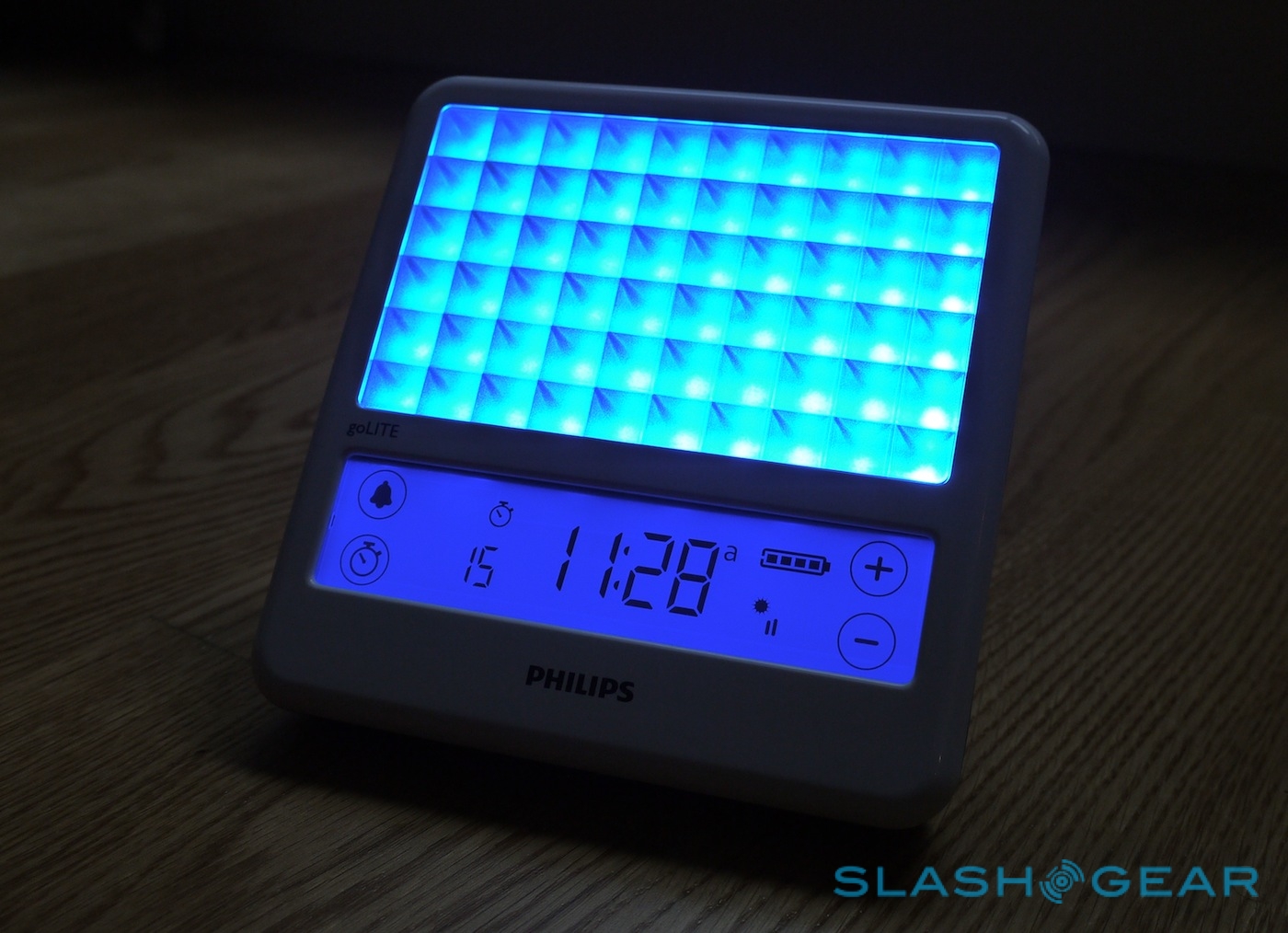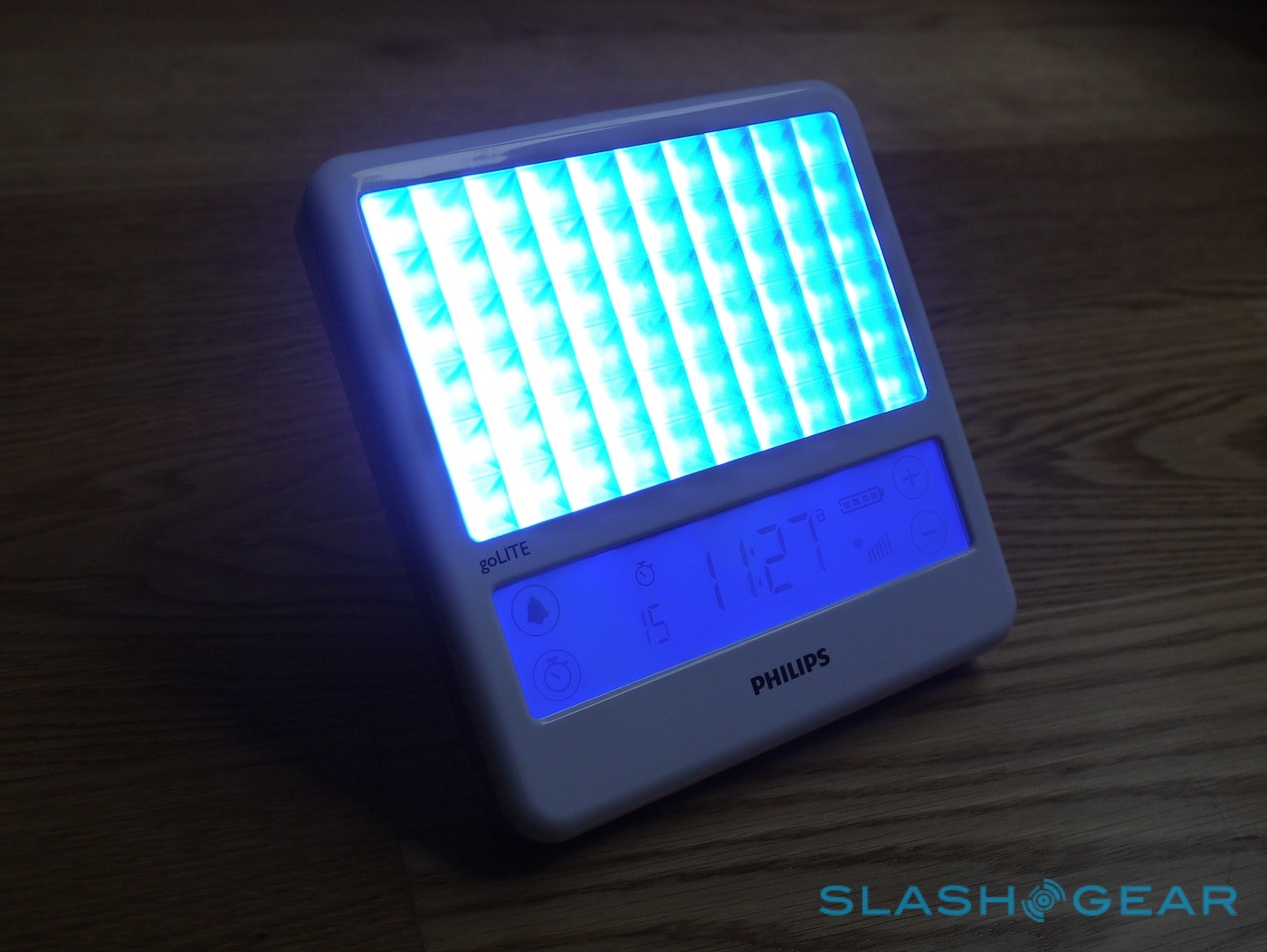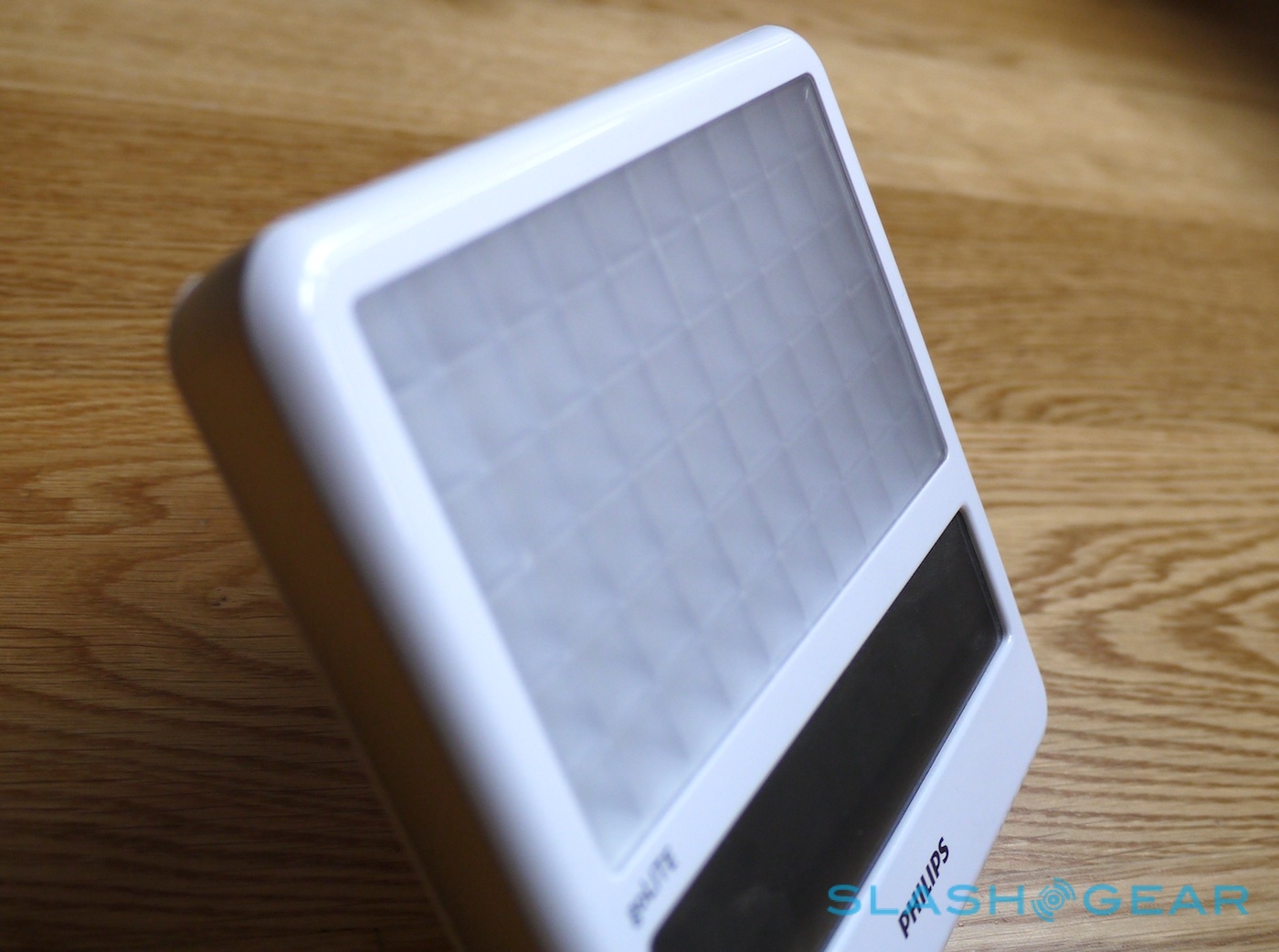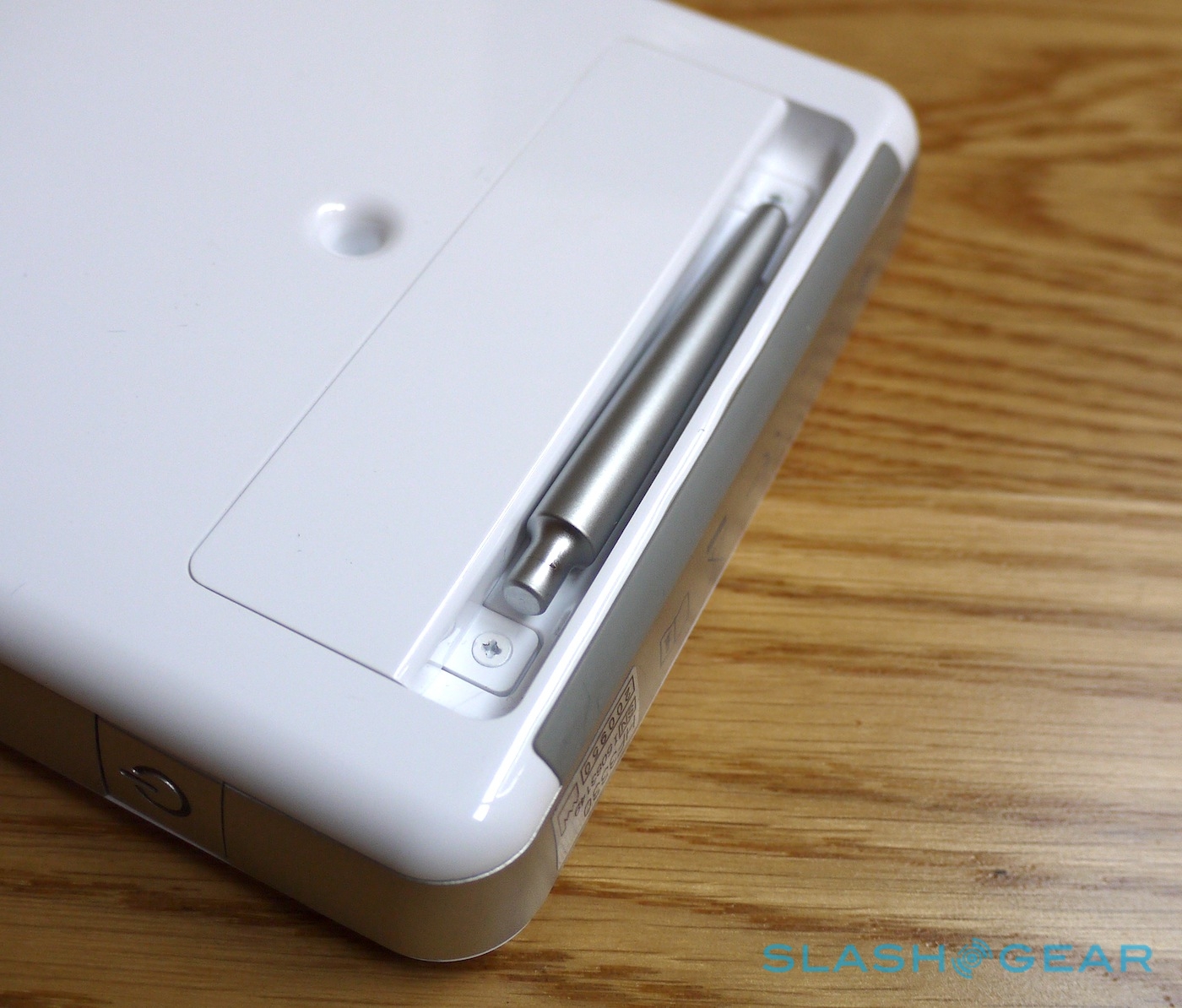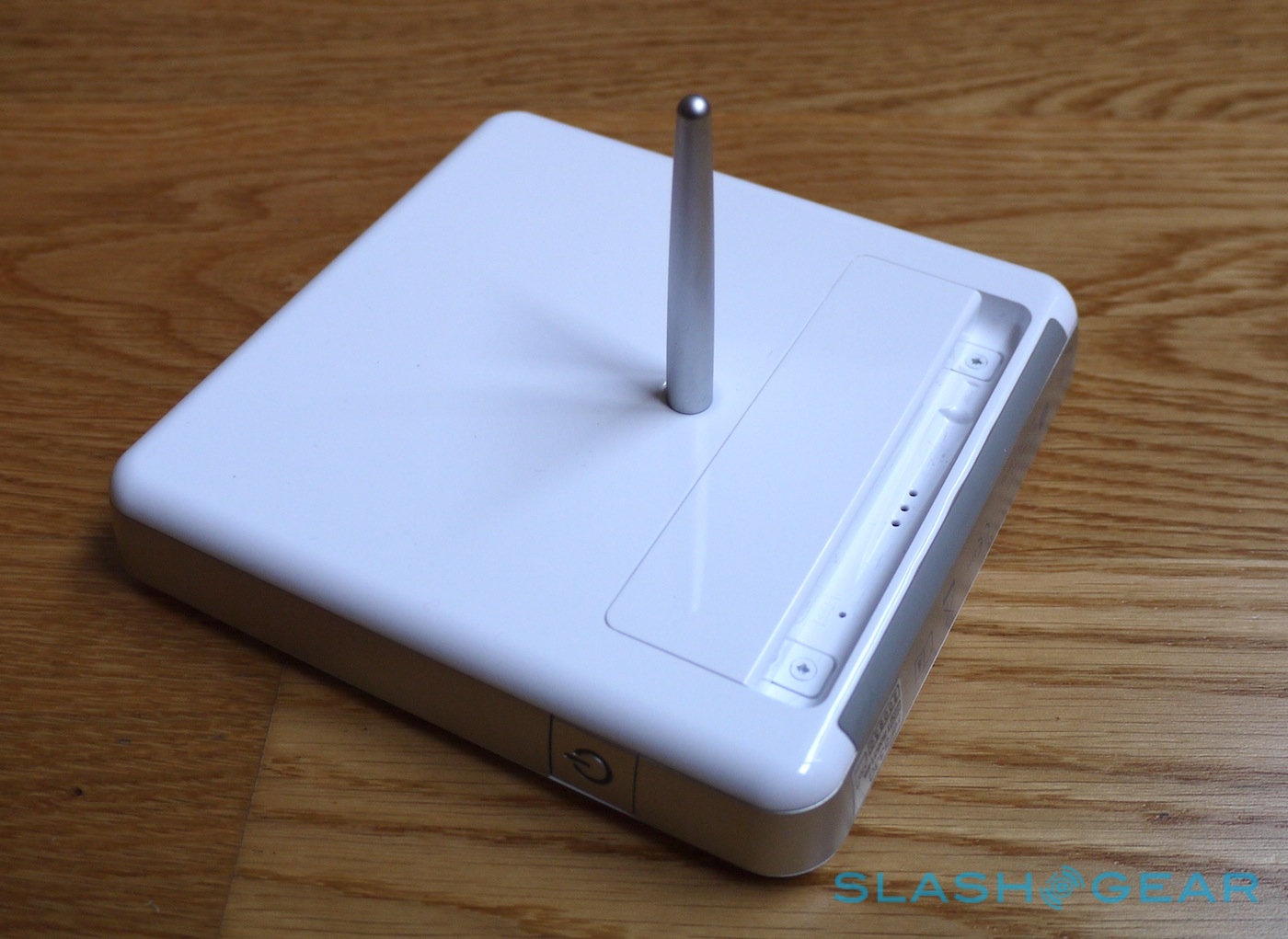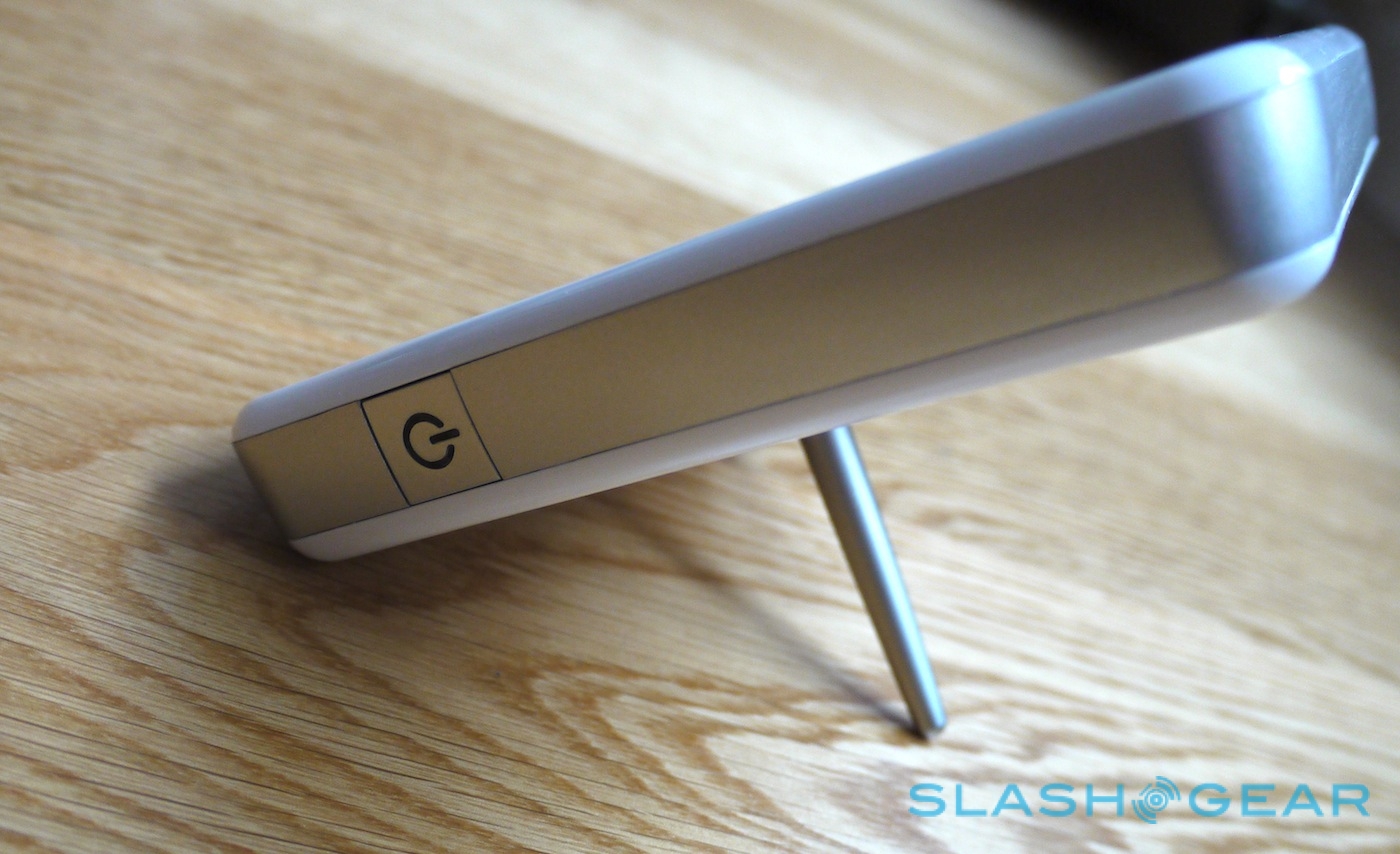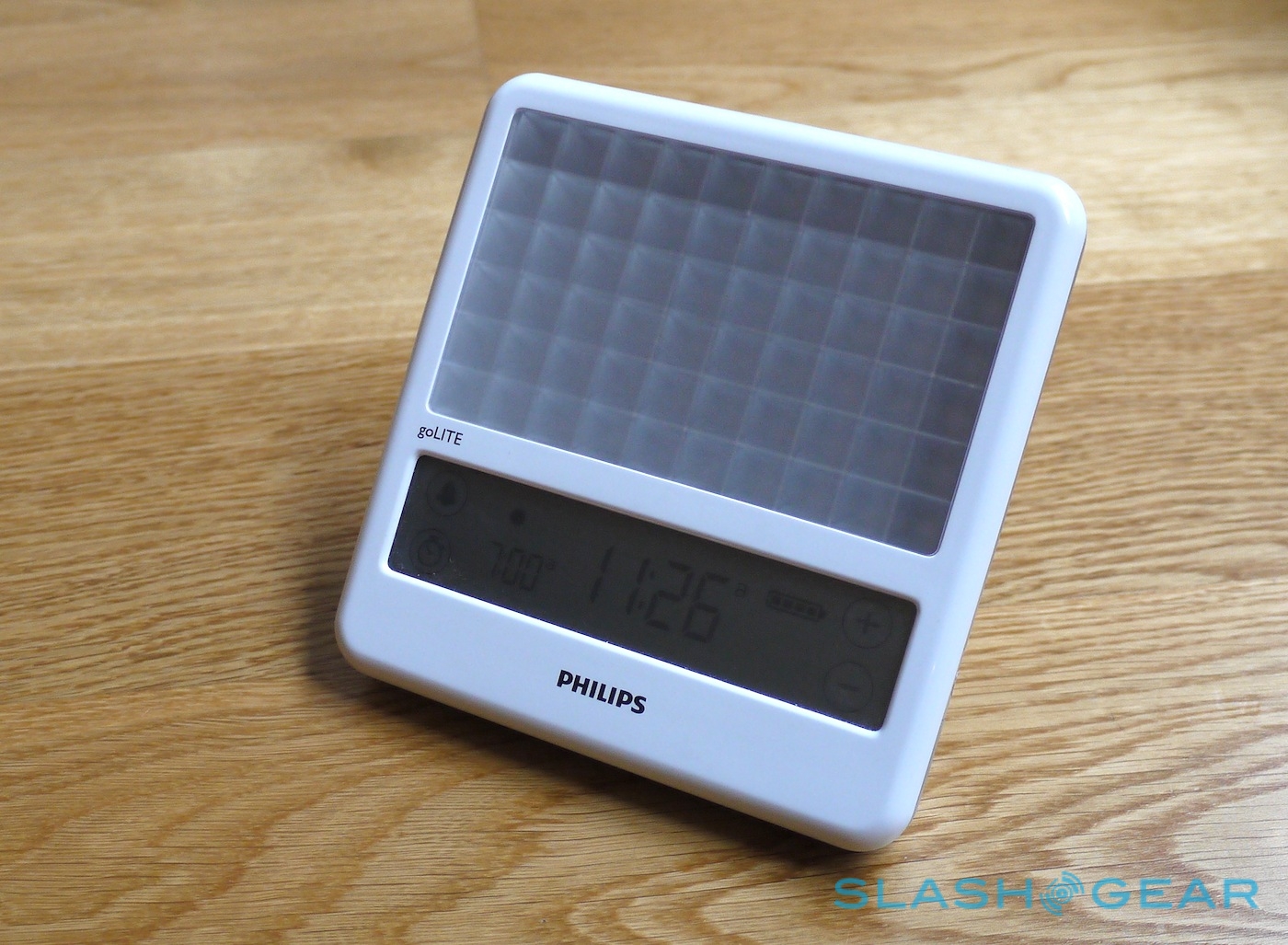Philips goLITE BLU Energy Light Review
You don't have to have been diagnosed with Seasonal Affective Disorder (SAD) to come down with the winter blues, or indeed to require some help waking up in the morning or keeping momentum during the day. Philips reckons it has the answer in the shape of the goLITE BLU HF3330/HF3332, a portable light lamp that promises to wake you up refreshed, buoy you during the day, and even help you say goodbye to jetlag. Ambitious claims from a box of LEDs: check out the full SlashGear review after the cut.
Hardware
A 14 x 14 x 2.5 cm white plastic box, the goLITE BLU is fronted by a pair of panels: a sizable blue LED array on top, and a smaller, blue-backlit touchscreen underneath showing time, light settings and battery status. The only physical control is a power button on the right side; on the left is a socket for the included AC power adapter. Philips also throws in a set of international plug adapters.
A notch on the lower rear panel holds a metal rod, which can be slotted into a hole to prop the goLITE BLU up. Magnets keep the rod in place in both, and there's a faux-leather slip case for transporting the whole thing. Unfortunately there's only one possible angle at which you can stand the light unit at, rather than an adjustable base.
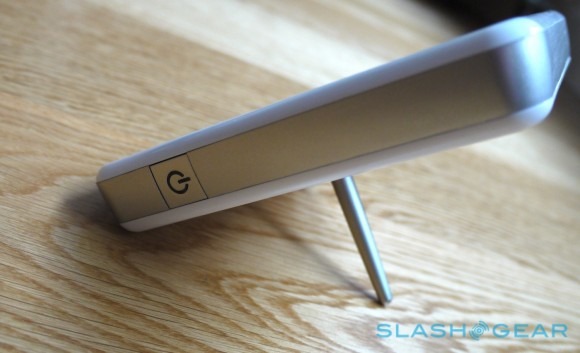
Setup is straightforward. Tapping the bell button sets the alarm, using the plus and minus buttons to adjust the time; the stopwatch icon sets the length of time the light is on for. Alarms can be either an audible tone or the LED lights, or a combination of both, while anything from 1 minute to an hour – in minute increments – can be set as the duration.
As well as waking up to light, you can trigger an impromptu session manually. Pressing the power button once turns on the touchscreen, and a second press turns on the LEDs; you can adjust the intensity – in 25-percent increments – and the length of time the goLITE BLU is on for. A temporary pause in a session can be added by pressing the power button briefly, or turning the intensity down to zero, though if you leave it paused and running on battery power for over five minutes, the goLITE BLU will automatically power off.
Performance
Philips recommends 15 to 30 minutes of time in front of the light each day, initially starting off at 50-percent brightness and increasing if you don't notice a difference after a week. Rather than sitting directly in front of the LEDs, basking in their glow as you might a tanning lamp, Philips advises putting it off to one side so that it shines tangentially onto your face. That, along with the limited angle options from the stand, can make finding the best position tricky, though it's easier if you're working at a desk at the time.
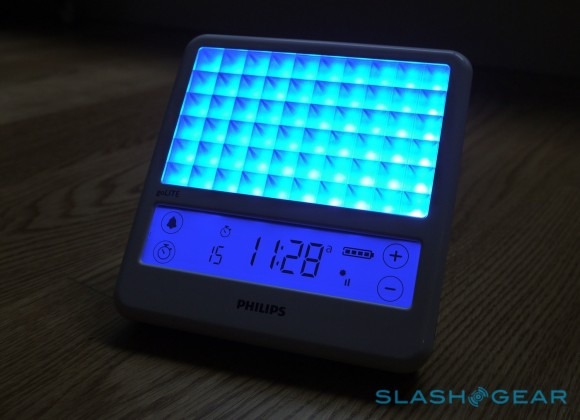
Instant results aren't promised, but the idea is that if you invest several weeks you can gain more energy, alleviate your mood or even help bypass jetlag. Using the goLITE BLU in the morning, when you first wake up, is supposed to make it easier to get out of bed, while a quick session in the middle of the day can, so Philips says, top up your energy levels when you more normally might be flagging.
By using the goLITE BLU for a few days before you travel, you can help your body clock reset itself to the new timezone at your destination: a few morning sessions when traveling east, or a few evening sessions when going west. Normally, though, Philips doesn't recommend using light therapy in the evening, because of its body-clock tweaking tendencies.
Does it work? That's a tricky one to judge: unlike, say, a smartphone battery test or laptop benchmarking, there's no way to conclusively say whether the goLITE BLU is working or not. All we can go on is my personal experience with the light.
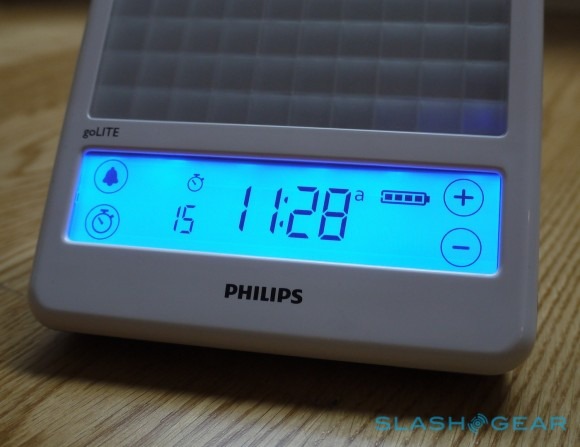
After a week or so of use – running the Philips light for 15 minutes in the mid-morning each day – I felt more alert and found myself working continuously for longer periods without realizing it. It's not like the jolt of energy you get after a strong cup of coffee: instead, I simply felt more balanced and less aware of time passing. Following a 7-10 days of use, I could scale down to using the goLITE BLU every other day, and still feel suitably perky.
Philips rates the goLITE BLU's battery as good for between three and five sessions. In practice, at 15 minutes each time, I found it was capable of as many as eight.
Wrap-Up
With street pricing at around $132/£190, the Philips goLITE BLU is an expensive buy if you find it doesn't work for you. Philips does offer a 30-day guarantee just in case, mind, and has plenty of research to say it will have an impact.
Waking up with the goLITE BLU proved somewhat jarring – imagine throwing open the curtains as soon as your alarm goes off, on an incredibly bright day – but as a daily top-up to your energy levels I had a good experience. You pay for the convenience of an alarm, portable form-factor and a rechargeable battery, though.

